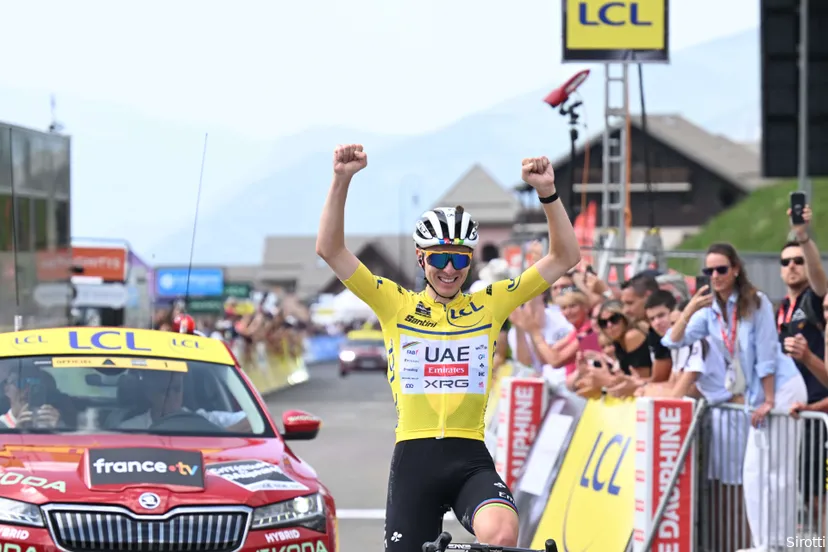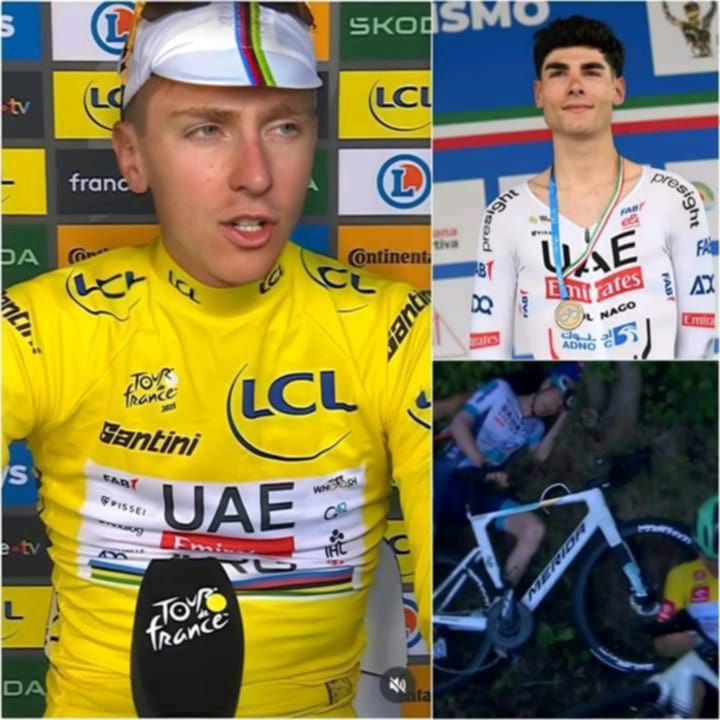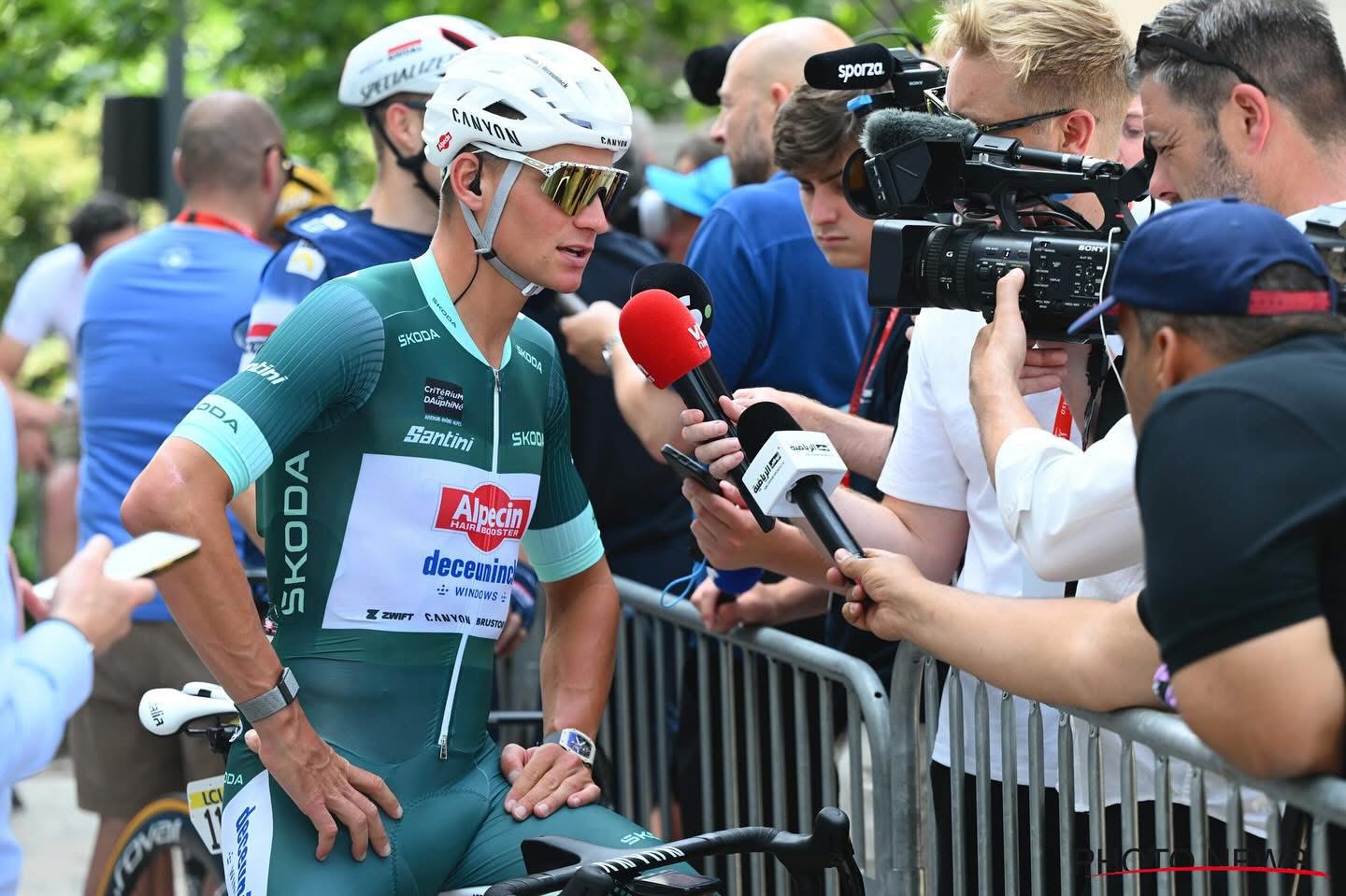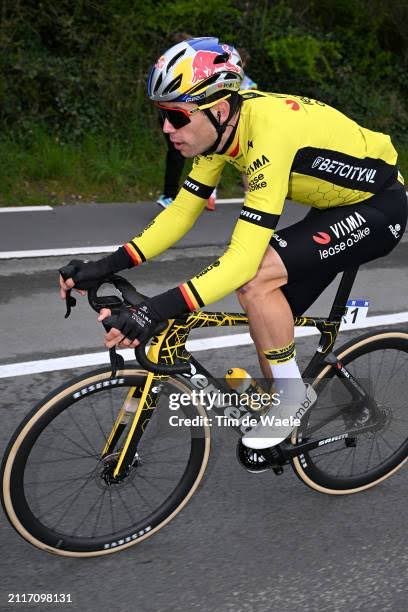The Duality of Tadej Pogačar: Vulnerability and Dominance at the Critérium du Dauphiné
In the world of professional cycling, few stories are as compelling as the rise and resilience of Tadej Pogačar. The Slovenian prodigy from UAE Emirates-XRG has been a force to reckon with—an embodiment of talent, tenacity, and strategic brilliance. However, even the most formidable athletes reveal vulnerabilities, and Pogačar was no exception during the Critérium du Dauphiné last Wednesday, when he appeared notably vulnerable in the time trial. Yet, in the days that followed, he transformed into an unstoppable force, battling fiercely with Jonas Vingegaard and demonstrating an extraordinary level of dominance.
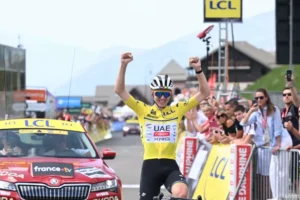
This article delves into the contrasting images of Pogačar’s vulnerability and dominance, examines the sportsmanship displayed during the race, and explores the unexpected criticisms he faced, illuminating the complex narrative of one of cycling’s most captivating figures.
The Vulnerability: Last Wednesday in the Time Trial
**A Stark Contrast**
On the opening day of the Critérium du Dauphiné, Pogačar’s performance in the individual time trial was a stark reminder that even the best are not invincible. The time trial, often considered a test of raw power and mental resilience, saw Pogačar finish noticeably behind the race leaders, signaling a rare moment of vulnerability.
His body language during the effort suggested fatigue and perhaps a strategic choice to conserve energy for the grueling mountain stages ahead. The Slovenian looked tense, and his performance contrasted sharply with his usual commanding displays. For many fans and commentators, this was an unexpected sight—Pogačar, often viewed as the ultimate contender, appearing human and fallible.
**Factors Contributing to the Performance**
Several factors may have contributed to this moment of vulnerability:
– **Race Strategy:** Pogačar might have prioritized conserving energy for the mountainous stages, understanding that the Dauphiné’s terrain favors climbers over time trial specialists.
– **Physical Fatigue:** After a grueling spring campaign, including the Tour de France and other classics, fatigue could have played a role.
– **Technical Aspects:** Equipment choices, pacing, or even minor technical issues can impact performance in time trials.
Regardless of the reasons, this moment humanized Pogačar, reminding fans that even champions experience setbacks.
The Turnaround: From Vulnerability to Unstoppable Dominance
**The Following Days**
What followed was a remarkable transformation. Over the next stages, Pogačar looked increasingly comfortable—his riding more confident, his attacks sharper, and his overall presence commanding.
**Battling Vingegaard**
One of the most compelling narratives was his fierce competition with Jonas Vingegaard of Team Jumbo-Visma, the reigning Tour de France champion. The duo exchanged blows on mountain slopes, with Pogačar launching audacious attacks and Vingegaard responding in kind. Their battles epitomized the spirit of professional cycling—skill, strategy, endurance, and sportsmanship intertwined.
**A Display of Sportsmanship**
At the finish lines, moments of mutual respect and camaraderie emerged. After intense efforts, both riders showed sportsmanship—shaking hands, exchanging words of encouragement, and acknowledging each other’s strength. These scenes underscored the integrity of the sport and the mutual respect shared among top athletes.
**Pogačar’s Rise to Dominance**
By the race’s climax, Pogačar’s effort was nothing short of spectacular. He displayed resilience and tactical brilliance that defied his earlier vulnerability. His commanding performances in the mountain stages and overall standings demonstrated why many consider him a future Tour de France favorite, even amidst stiff competition.
The Unexpected Criticism: Monday’s Perspectives
**A Surprising Source**
Despite Pogačar’s impressive resurgence, criticism arose unexpectedly on Monday from an unlikely quarter—some former racers, commentators, and fans questioned his approach during certain stages. These criticisms centered not on his performance but on aspects of his racing style and strategic decisions.
**Nature of the Criticism**
The critiques included:
– **Aggressiveness:** Some argued that Pogačar’s aggressive attacks, while entertaining, sometimes risked unnecessary fatigue or tactical overreach.
– **Race Tactics:** Others questioned whether Pogačar was prioritizing individual glory over team strategies or race conservatism.
– **Perception of Fair Play:** A minority suggested that certain moves could be considered borderline in terms of sportsmanship, although there was no concrete evidence of misconduct.
**Why the Criticism Was Surprising**
What made this criticism unexpected was Pogačar’s reputation as a disciplined, sportsmanlike rider. His conduct during the Dauphiné had been exemplary, with respectful interactions and a focus on racing integrity. The critiques appeared more rooted in contrasting philosophies of racing—aggression versus conservatism—rather than outright misconduct.
The Broader Context: Pogačar’s Resilience and the Nature of Cycling
**A Human Champion**
Pogačar’s journey exemplifies the unpredictable nature of cycling. Vulnerability and dominance often coexist, and the ability to rebound from setbacks is what defines champions. His experience during the Dauphiné underscores the importance of mental resilience, adaptability, and strategic nuance.
**The Dynamics of Race Strategy**
Cycling is a complex interplay of tactics, physiology, team support, and mental fortitude. Pogačar’s initial vulnerability was a reminder that even the best must navigate these variables carefully. His subsequent dominance showcased his capacity to adapt and excel under pressure.
**Sportsmanship and Competitive Spirit**
The scenes of mutual respect between Pogačar and Vingegaard highlight the nobility of cycling. Despite fierce competition, athletes often display camaraderie, reinforcing the sport’s core values.
**Criticism as a Reflection of Expectations**
Criticism, especially from unexpected sources, reflects the diverse perspectives within the cycling community. It also underscores the high expectations placed on Pogačar—fans and analysts alike scrutinize every move, seeking perfection in their heroes.
Looking Ahead: The Future of Pogačar and the Sport
As Pogačar continues to evolve, his ability to manage vulnerabilities and capitalize on strengths will determine his trajectory. The Critérium du Dauphiné has already demonstrated his resilience and capacity for dominance. The criticisms, whether justified or not, serve as a reminder that even the greatest athletes are subject to scrutiny and debate.
**Potential Challenges**
– **Physical and Mental Fatigue:** Managing the demanding race calendar remains crucial.
– **Rivalries:** Vingegaard and others will continue to push him, leading to exciting battles ahead.
– **Strategic Evolution:** Balancing aggression with tactical patience will be key.
**The Legacy**
Pogačar’s journey during this race exemplifies the essence of sports—human, flawed, resilient, and inspiring. His ability to confront vulnerability and emerge stronger cements his status as one of cycling’s brightest stars.
Tadej Pogačar’s performance at the Critérium du Dauphiné was a testament to the unpredictable nature of sport. From moments of vulnerability to displays of dominance, he captured the imagination of fans and critics alike. The sportsmanship displayed between him and Vingegaard exemplifies the nobility of cycling, while the unexpected criticisms highlight the high standards and passions within the community.
As the cycling season advances, all eyes will remain on Pogačar—watching how he navigates the challenges ahead, balances his racing style, and continues to captivate spectators with his extraordinary talent and indomitable spirit
